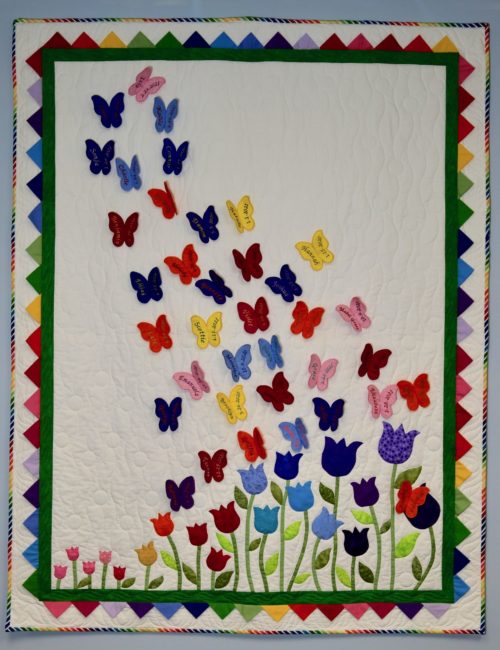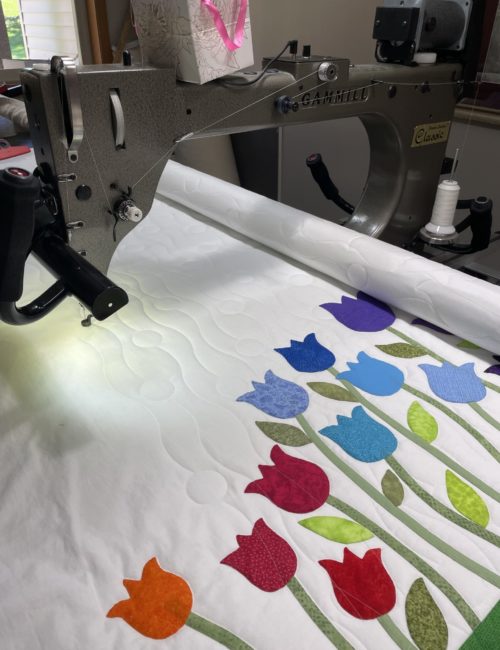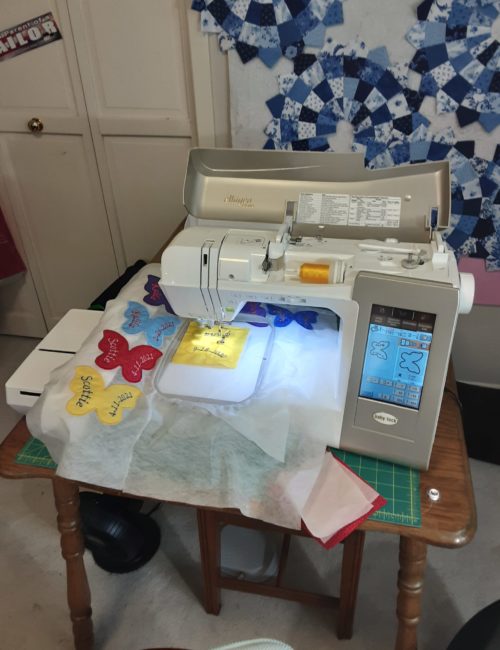We Are Sincerely Sorry for Your Loss
The loss of a baby is a devastating experience. In addition to experiencing profound grief, you are likely dealing with your body’s natural process to provide breast milk for your precious child to whom you just said goodbye.
Some parents who have lost their little one will find comfort and healing by pumping and donating their milk for a time to give to other babies in need. We invite you to consider giving this precious gift to the Minnesota Milk Bank for Babies as a legacy from both you and your baby.
If you would like more information about lactation and the options available after your loss, please click here. A print version is available to download, “Teardrops with Milkdrops.” You can also call a Donor Coordinator at 763-290-1865 for more information.

Our Forever Butterflies Memorial
Our Forever Butterflies is a handmade quilt lovingly made and displayed on our wall at the Milk Bank to honor the babies of bereaved parents who have donated their milk to the Minnesota Milk Bank for Babies. The quilt is adorned with a colorful array of flowers with beautiful butterflies that fill the sky. Each butterfly sewn on the quilt has the first name and birthdate of a forever baby embroidered on it. Another butterfly is made and given to the family as a keepsake.
Our memorial program began in the Fall of 2021*. Handmade quilts will be added to our walls over time and our forever butterflies will continue to grace the skies, creating a lasting memory of the gift made to honor these forever babies.
The Forever Butterflies Memorial Room is open to families in our bereavement program during our business hours. Within this tranquil space, we have added a Memory Book, inviting visitors to share their cherished memories and reflections. This allows families to contribute additional tributes to their forever babies, creating a deeper sense of connection and remembrance.
*We are grateful for the Sommers Family grant that provided funding to establish the Milk Bank memorial quilt program
Resources for You and Your Family
To support families experiencing an infant loss, a list of grief resources has been compiled for parents and their loved ones. Please see the links for both state-wide and regional resources.
- Teardrops with Milkdrops tri-fold brochure – English and Spanish
- Regional Resources/Groups for Grieving Parents, Minnesota Regional Resources flyer
- Breast Massage and Hand Expression Following Perinatal Loss, Breastfeeding Medicine of North East Ohio video.
- Pregnancy Research Project
- This is an opportunity participate in research about pregnancy loss if: You are at least 18 years of age or older; You have had a stillbirth (pregnancy loss at or after 20 weeks gestation) at any time in the past; You have delivered a living baby within the last five (5) years; or, You are currently pregnant at 12 weeks gestation or more.





